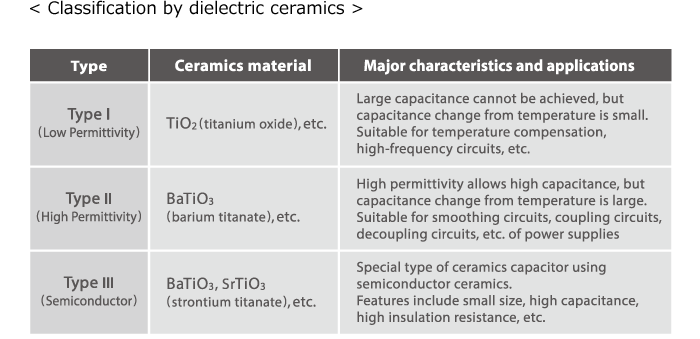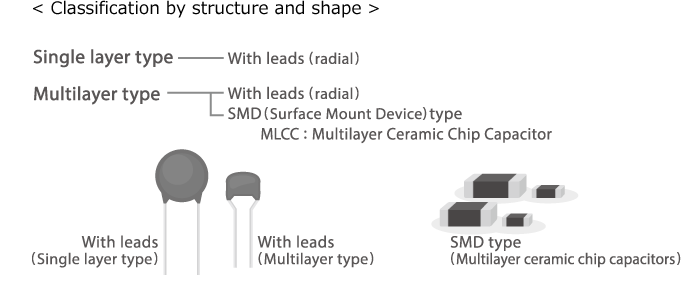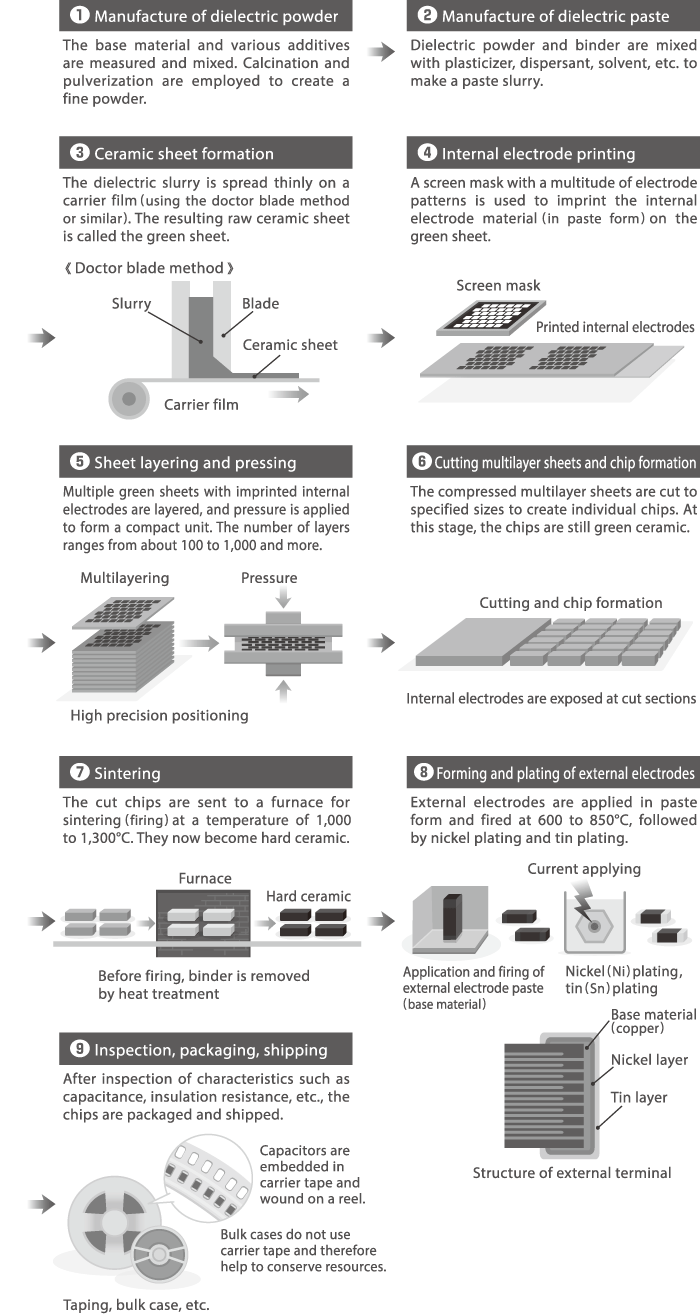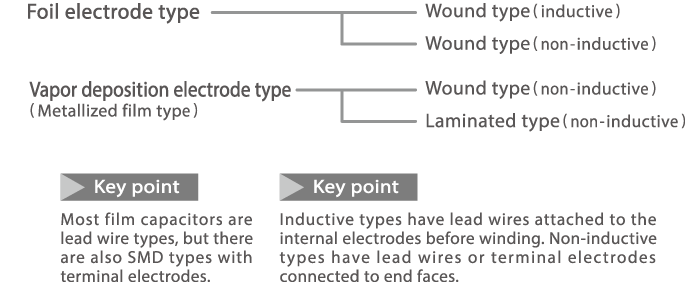Electronics ABC
Capacitors, Part 2 "Ceramic Capacitors [1]"

Types of ceramic capacitors
About 80 percent of all capacitors manufactured worldwide currently are chip type ceramic capacitors. A mobile phone has about 300 to 400, a smartphone about 400 to 500, and a notebook computer or tablet device about 700 to 800 of these capacitors, which contribute significantly to smaller dimensions and lower weight of electronic equipment. Ceramic capacitors are categorized by the type of dielectric ceramics, as well as by their structural design and shape, as shown below.


Structure of multilayer ceramic chip capacitors
A multilayer ceramic chip capacitor incorporates multiple dielectric and internal electrode layers in a sandwiched configuration. Instead of using leads, terminal electrodes (external electrodes) are integrated in the SMD (surface mount device) itself, making the capacitor more compact. This saves space and enables high-density mounting on circuit boards.

Basic technologies for increasing capacitance of multilayer ceramic chip capacitors
As can be deducted from the above equation, ways to increase the capacitance of multilayer ceramic chip capacitors are making the dielectric layer thinner, reducing the distance between layers, and increasing the number of layers to increase the total electrode area. The basic technologies to achieve these aims are thin film technology and multilayering technology.

Manufacturing techniques of multilayer ceramic chip capacitors
Manufacturing techniques of multilayer ceramic chip capacitors include printing and the so-called green sheet method, which is currently the dominant type. The steps involved with this method are described below.

TDK is a comprehensive electronic components manufacturer leading the world in magnetic technology






